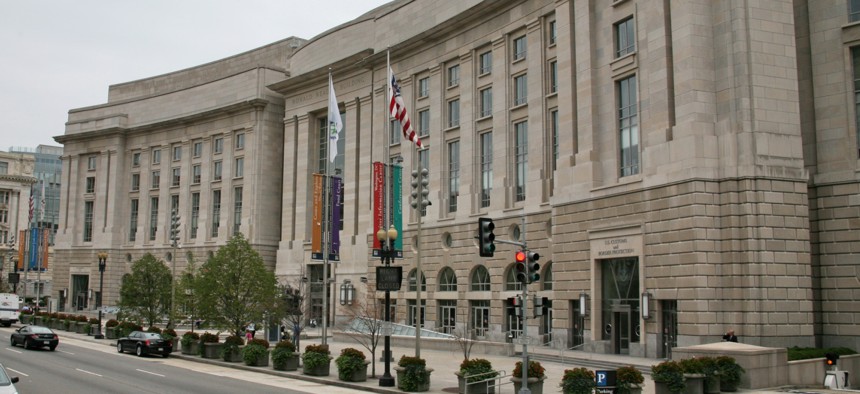Government Reorganization 2016: No Magic Wand
With public trust at an all-time low, is there any appetite for overhauling government?
The recent history of government reorganization efforts hasn’t been very impressive. President Obama in his 2012 State of the Union offered a fairly mild proposal to reorganize the federal government’s trade functions. Republicans had proposed this idea in the 1990s, but the only bipartisan response it generated was opposition to any large-scale reorganization.
Is there a need to rethink the federal government’s organization and operations? Probably yes, given the reports regularly issued by the Government Accountability Office on program duplication and overlap. An advocacy group, the Government Transformation Initiative, has been promoting bipartisan legislation.
The Senate version of the bill proposes a seven-member bipartisan board, which would produce recommendations within a year, then monitor them and propose more over the six-year lifespan of the board. There would be expedited procedures for congressional consideration of any legislative proposals it offers.
Former Comptroller General David Walker is a strong supporter of this initiative. Steve Goodrich, one of the leaders of this initiative, said in a recent interview that the legislation would change how agencies do business.
However, the bigger question may be timing. Could it pass? Could it get implemented? I did a series of blog posts examining past government reorganizations shortly after the Obama 2012 initiative was proposed for trade reorganization. At the time, I was cautiously optimistic, noting: “the climate today is different.” Well, in the end it wasn’t.
Given the current political mood, is this a better point at which to rethink government operations? That may depend on how the presidential election campaign unfolds in the coming months. So far, the focus has been on policy issues, not government organization or management.
As I noted in my earlier blog posts, history hasn’t been kind to government reorganization and reform proposals. But that doesn’t mean they shouldn’t be attempted.
Work-Arounds Work
It isn’t that good ideas are lacking. The challenge is getting action on them. There is no magic wand–at least not since Congress allowed the president’s reorganization authority to lapse.
An alternative approach has been to undertake incremental administrative improvements. While not as politically dramatic as sweeping reorganizations, there has been steady progress in recent years using this approach, mainly in cross-agency efforts. For example, the departments of Commerce and Labor have jointly supported economic development activities in distressed communities by joining Commerce’s business investment and Labor’s job training initiatives into an integrated, ground-level development strategy. In a way, this is using creative flexibility to create virtual agencies that are organized around the customer, not administrative processes. Some call these “one stops” or “no wrong door” approaches. Technology often makes these approaches work.
In addition, the cross-agency priority goals put into law several years ago have recently received congressional support via a $15 million fund (p. 581) providing the ability for goal leaders to create common web-based platforms and joint action offices. These less-direct approaches for getting government to work may be more time-consuming and complex, but they can work when leaders and agencies are willing to work together.
Does this make it hard for the public to understand how government is working and who is accountable when things go wrong? Does it reduce trust and the sense of democratic legitimacy? These aren’t readily answerable questions, but in the longer term, they may provide the impetus to reorganize rather than to continue taking incremental steps. But this may not happen any time soon.
Photo: Flickr user Cliff




